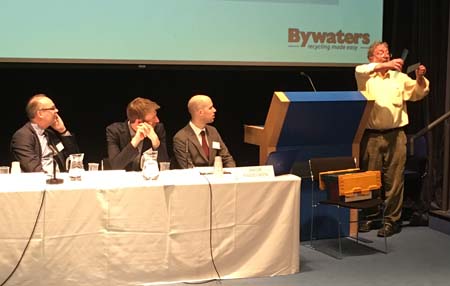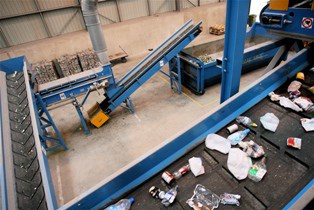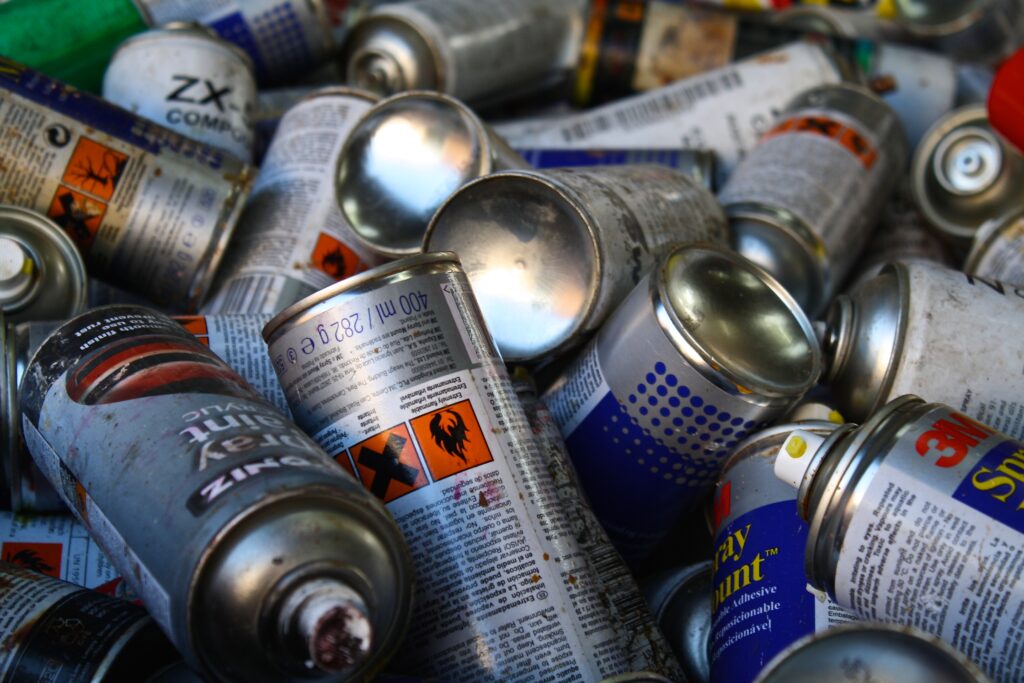Addressing the event last week, Mr Everett, from Defra’s recycling team, said: “One of the key messages in this process is the transparency of data. The reliability of information from this will boost confidence in the material for recycling.”

He noted that information collected includes supplier details, breakdown and quality of waste material sent to MRFs as well as data on specified output material streams and waste material transferred to other sites.
Mr Everett remarked that high quality recycling can support growth and it also helps “to maximise the economic value to local authorities of the waste material collected.” It will also, he added, help drive growth in the market for recyclates.”
And, the official emphasised that the regulations have a part to play in the debate over achieving better quality from commingled recycling.
Commingling
“The information produced will help local authorities and waste management companies to help demonstrate that commingling is capable of delivering high quality recycling,” he said.
Mr Everett explained that the data, which is submitted to a reporting portal run by WRAP, shows the average percentage of target material, usually paper, plastic, metal and glass in the input and output streams.
“Three quarterly periods of data have already been published since October 2014 when the system began. The data has looked quite consistent over the first three quarters but the figures should be treated with caution because the system is still new and it is bedding in.”
He also referred to the figures for average composition which showed paper made up almost half the material in the MRFs.
The conference also heard from the regulators including Andy Bee from the Environment Agency and John Fry from Natural Resources Wales.
Mr Bee said that latest data showed that there were 87 live sites which had notified the Agency as coming under the regulations. “Our original estimate was that there would be 200 sites but we have found that many of these have not qualified for a variety of reasons.”
Inspections
The Agency, warned Mr Bee, is now moving to the stage of unannounced inspections of MRFs alongside the annual inspection. He advised operators to prepare for these by reading the regulations, in particular schedule 9a, and looking at WRAP guidance.”
He advised delegates that the Agency was trying to take a helpful approach to the regulations. “We want to work with you so that the regulations work for everyone.”
These reasons for not coming under the regulations, said Mr Bee, included that some had closed, they were not handling recyclables, they were below the threshold or they had ceased operations.
Giving the view from Wales, Mr Fry said that out of 30 facilities expected, 11 had notified but that there were a number of reasons why there was a gap. Reasons for non-notification and involvement with the regulations included
- Material received was source separated and bulked
- Under 1,000 tonnes so excluded from the regulations
- Residual waste dealt with, not recyclables
- Closed down
- No longer treated commingled waste
He warned that there were “a small number of failures to submit and we are pursuing these down the compliance route.”
Mike Jefferson, of Verde Research and Consulting, gave a detailed presentation on the regulations and noted that individual MF operators can decide what their outputs are. And, he reminded delegates that after two years of regulations, in October next year some sampling changes and increases in some sampling volumes will be required.
Sampling
He gave advice on the sampling process, commenting that a conveyor divert can be a particularly good way to take a sample and that recyclers needed enough trained staff to do the sampling and that the sampling process should be as automated as possible.
Mr Jefferson also spoke about the screens used for the sampling – fines pass through with the main materials left on top and 45 mm squares are advised which means that materials less than 55mm in size passes through. The larger fraction is sorted into target material.
“There is still discussion around what is largest material and non-recyclable material, such as glass into a non-glass MRF,” he said.
“Three quarterly periods of data have already been published since October 2014 when the system began. The data has looked quite consistent over the first three quarters but the figures should be treated with caution because the system is still new and it is bedding in.”
Ian Everett
Defra
The screen sizes saw analysis from another speaker, Dr Alan Kirk a scientific adviser at Bywaters. Dr Kirk pointed out that while the screens were supposed to just let material particles through, questions remained about what was the correct size and their effectiveness. He demonstrated how long narrow items could fall through, such as a spoon or a ruler. And he argued persuasively that there was confusion because of the screens.
This is because, for example, if the weight of the glass in the fines is apportioned to other materials this can give a distorted result. Bywaters found that in one contract a very much higher percentage of glass was in the fines and when this was added by weight to the target figures proportionately, it increased the paper figure by 10%. Consequently the client expected more income because it appeared that more paper was being collected whereas in reality the glass was collected and had a low or even negative value.
There were a number of other speakers.
Targets
Timothee Duret, engineering manager – organic and mechanical design team at Veolia, said that it should be remembered that that targets are site-based and target categories can evolve.

Andrew Bird, chair of local authority recycling officers group LARAC, said the organisation “fully supports the regulations – they could have gone further but they do provide a consistent policy base.”
He said that contamination is now an issue for local authorities where it hasn’t been a problem necessarily in the past. “More rejected loads is a cost. Some communications don’t necessarily work in all areas. We need to be a lot smarter in the way we communicate with different demographics.”
Mr Bird also took issue with Defra over the Department’s plans for more consistent collection services in England. “It’s not the way we collect, it’s the variance in materials collected by local authorities which is largely dictated by contracts and available infrastructure and end markets.”
Stuart Hayward-Higham, technical director of Suez, who chaired the final session, asked whether bins should be weighed at the household level. “Yes, perhaps in an ideal world,” responded Mr Bird. “But that goes into a debate over pay as you throw in household waste. It is political at the end of the day and that is the barrier we have there. The ormer DCLG wouldn’t entertain it but it is something we should look at as well as a host of other measures going forward.”












Subscribe for free